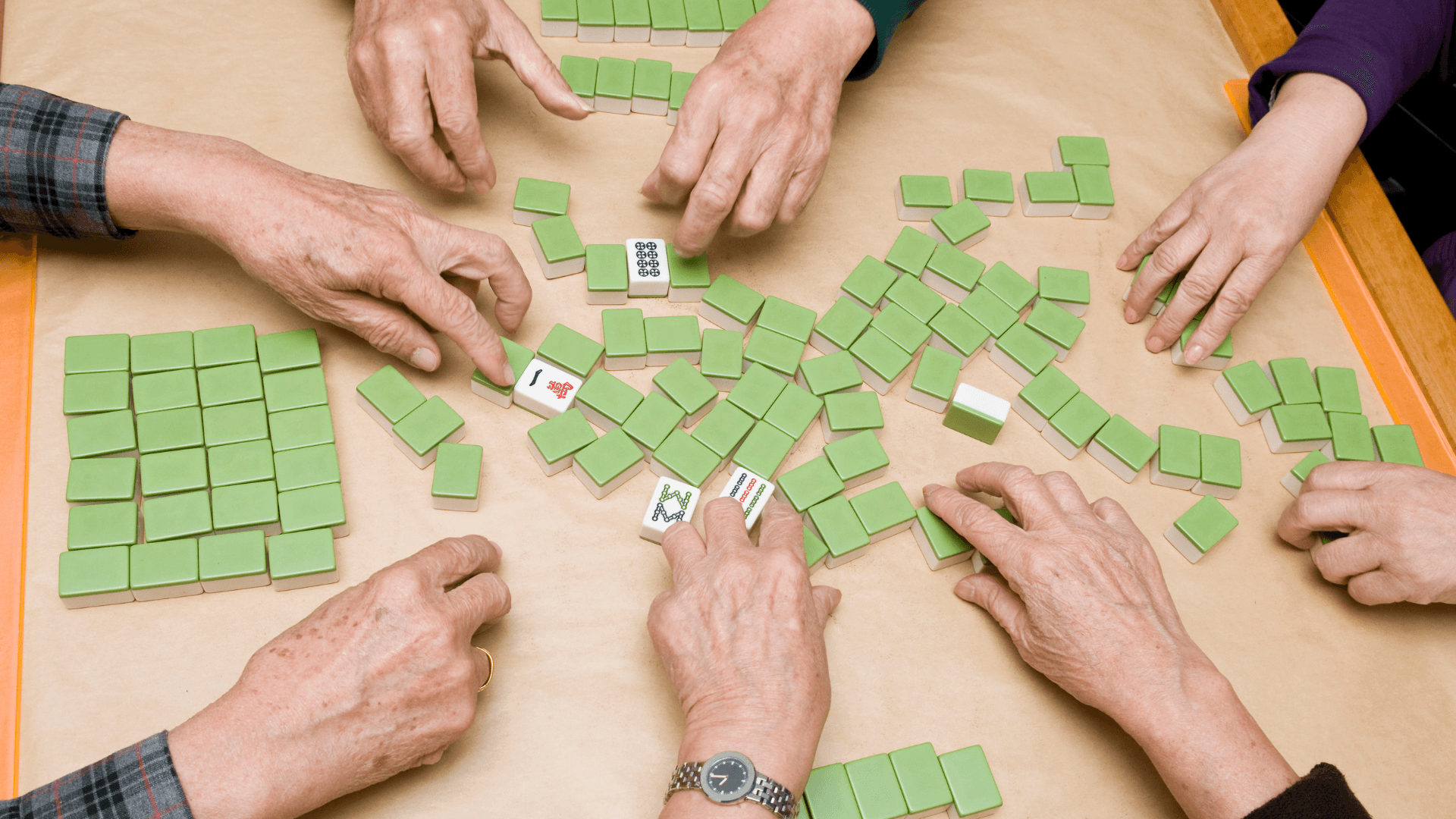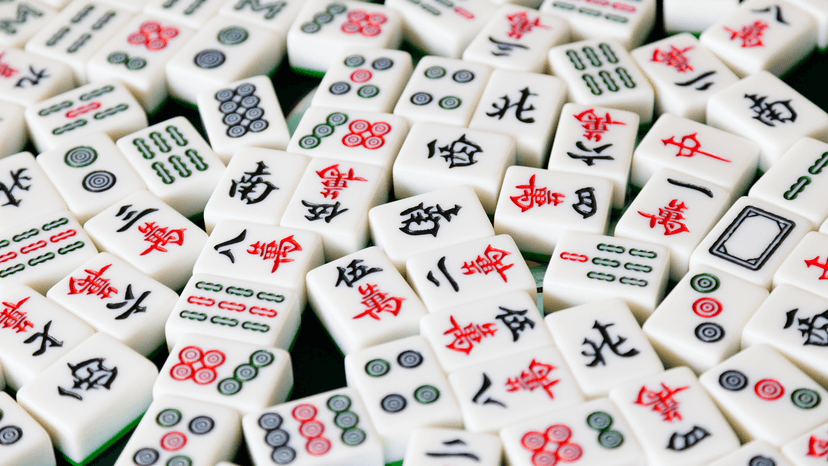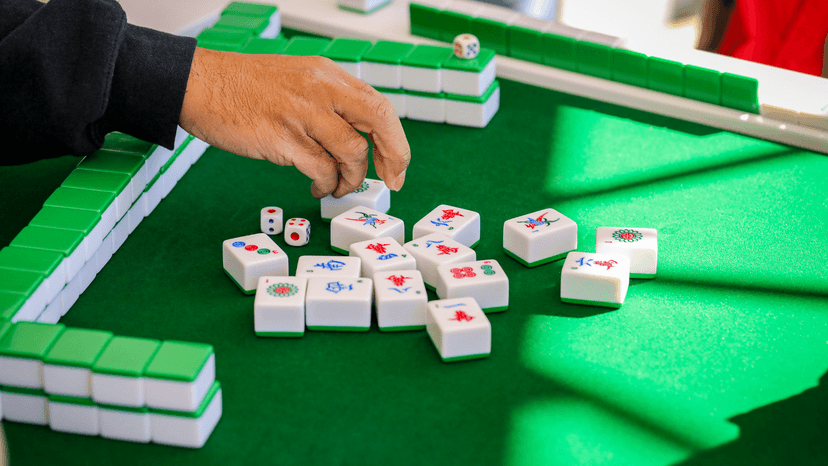Mahjong Tips and Tricks - Things To Remember

Mahjong is not a game of pure luck. Players need to memorize rules and strategies in order to play the game. But, there is another crucial thing most players ignore. When a player has learned how to play Mahjong, the next step is to know about all the major tips and tricks.
In this guide, we will discuss the mahjong tips and tricks we know about, so players don’t have to worry. Now, let us get started right away without wasting any time.
Start The Game With A Plan
Players should come up with a plan before playing the Mahjong game. As soon as a player sees a tile, they should start brainstorming about how to proceed further. The first ideal step a player should take is to decide which tiles to pick up, wait for, and which ones they don't want in their hand.
- A player must remember that their rivals are constantly watching what they put on the table.
- For the majority of seasoned mahjong players, the tiles that are thrown already offer them a solid sense of what they have in their hands and allow them to plan their strategy against others. Because of this, skilled players can exploit another player's toss to their advantage.
- Pay attention that bluffing won’t exactly always be beneficial for players, as it can come back too, which will give opponents an idea of a player’s hand.
Memorizing the Tiles
A player cannot search for meld sequences if they are unsure of which characters go with one another. If they are unfamiliar with Chinese writing, that is very challenging. A player could desire to spend money on a set of Mahjong tiles with Arabic numerals. In addition to the conventional symbols on mahjong tiles, there are also these Arabic numerals. They won't have to learn how to read traditional Chinese calligraphy in order to find the tiles they're looking for.
Skipping the First Throw
Skipping the throw is one of the best strategies in mahjong as it will not give away a player’s plan to the opponents. It will surely help players to advance in the game early.
The disadvantage of this tactic is that it might expose a player's mahjong-winning steps for that specific round. The opponent's game strategy will already be known if they are motivated to win the match. Even though that player could have won a set with that throw, they will notice that their opponents will be more cautious with their throws going forward. This will prevent that player from winning another set.
- Collecting the first throw may indicate that a player is still learning the game. This can be used against him by opponents.
- They shouldn't be too upset about not receiving the leftovers. Players are free to put them off.
- In Mahjong, players can use a variety of tiles; they just need to wait for the opportune moment to assemble a winning hand.
Keep Your Rack Tidy: Avoid Gaps
One of the most effective Mahjong tips is to avoid leaving gaps between your tiles on the rack. Experienced Mahjong players are highly perceptive and can easily decipher a player's strategy and potential moves if there are visible gaps. This can give away your hand intentions too early.
Some beginners might create gaps to better arrange their tiles into combinations and plan their next moves. However, this also signals to other players that they might be aiming for similar combinations. While leaving gaps with unconnected tiles can confuse opponents, it's only advisable if you're confident you won't get confused by your own tactics.
Simple Scoring for Beginners
For those new to Mahjong, it's best to keep the scoring straightforward to avoid disrupting your game and hindering your chances of winning. A simple scoring method is to award one point to the player who completes the first Mahjong, and zero points to everyone else. Tally the points, and the player with the highest score wins.
Once you're more comfortable with the game, players can explore other Mahjong scoring rules that are similar to the official Chinese Mahjong Competition rules. After that, you can try more complex scoring systems, like those used in Hong Kong or Riichi Mahjong.
Understanding Tile Point Values
It's also beneficial to know that Pongs generally carry a higher point value than Chows. Chows are typically only useful when you have four of them to form a Mahjong. While it might seem counter-intuitive, especially if you have experience playing poker, focusing on making Pongs over Chows can be a more strategic approach in Mahjong.
- Think of a Pong as similar to a three-of-a-kind in poker, while a Chow is akin to a straight.
- While Chows might be more valued in poker, Mahjong has its own distinct hand rankings, so concentrating solely on Chows might not be the best strategy.
- New Mahjong players in the Philippines who learn the different meld combinations and consider the point values for each will make fewer errors and improve their game more rapidly.
Keep Your Melds Under Wraps
To maximize your points, keep your melds secret until you're ready to declare Mahjong. Avoid revealing them prematurely. While beginners often rearrange their tiles to see which melds they're forming, which is allowed, try to keep them organized and in a row as much as possible.
- It's easy for opponents to see your strategy when you reveal your full melds or set aside specific tiles. They'll adjust their Mahjong approach accordingly.
- By keeping a straight row of tiles, a player becomes a more challenging Mahjong opponent.
Discarding Tiles Wisely for Filipino Players
While it might be tempting, discarding tiles from your hand that don't seem to fit isn't the best move. Instead, focus on the tiles your rivals are discarding.
Paying close attention to the discard pile increases your chances of finding the tiles you need and decreases the risk of accidentally giving them to another player's Mahjong hand.
What's the smartest play if you have many tiles to discard? If you're sure your opponents won't want them, it's best to discard a tile that's closest to other tiles already in the discard pile.
The Power of Pairs in Mahjong
A pair is a valuable asset that every player should keep. These are some of the most versatile tiles. You can keep them as pairs, or use them to form a four-of-a-kind (Kong), a three-of-a-kind (Pung), or a sequence of three identical tiles (Chow).
- Don't break up pairs if you have them; they can be crucial for winning tiles as the game progresses.
- It's important for players to quickly implement their Mahjong-winning strategies.
Conclusion: Mastering Mahjong for the Philippines
To truly master Mahjong, remember these tips and tricks. Without them, you'll find it harder to compete, as many players are skilled at observing and deciphering others' strategies.
FAQ
Are there specific strategies or "tricks" to playing Mahjong effectively?
Indeed, there are several effective strategies in Mahjong that players in the Philippines often employ. Some of the most common include:
- Starting the game with a clear plan for your hand's development.
- Actively memorizing the tiles that have been discarded and those still in play.
- Strategically skipping the first throw if it doesn't immediately benefit your hand.
- Focusing on building your foundation (the initial sets) before aiming for complex hands.
What is the ultimate secret to consistently winning at Mahjong?
There isn't one single "secret" to winning at Mahjong, as it's a game of skill, strategy, and a bit of luck. However, successful players understand the importance of keeping their hand flexible and moving it in the desired direction while being patient. Simply picking up tiles without a clear purpose will rarely lead to victory; thoughtful play and perseverance will always be key.
What is considered the strongest or "best" hand in Mahjong?
Generally, the standard winning hand in Mahjong consists of four sets (which can be chow, pung, or kong) and one pair. While specific hands like the "13 Wonders" are highly valued, this basic structure is the most common and fundamental winning hand.
Is it possible to win a game of Mahjong with 7 pairs?
Yes, winning with 7 pairs (also known as "Seven Pairs" or "Chii Toitsu") is a valid and often sought-after hand in Mahjong. However, it presents a unique challenge. There are typically only three ways to complete this hand in a one-sided wait, making the odds of winning quite limited. Furthermore, to achieve a 7-pair hand, a player cannot take any tiles from other players' discards; all pairs must be self-drawn.
What exactly are the "13 Wonders" in Mahjong, and why are they significant?
The "13 Wonders" (also known as "Thirteen Orphans" or "Kokushi Musou") is widely considered the finest and most prestigious final hand in Mahjong. It consists of one of each of the 13 unique terminal and honor tiles (1s and 9s of each suit, and all seven honor tiles), plus any one of these 13 tiles as a pair. Due to its extreme rarity and specific tile requirements, players have a very low chance, approximately 1 in 2464, of achieving this powerful hand.
What are the rules for using jokers in Mahjong, especially if I have four?
In Mahjong, jokers offer great flexibility. An exposed pung, kong, or quint can indeed be played with one or more jokers to complete the set. However, there are specific limitations: players are generally not permitted to pick up a discarded tile to form a single or a pair using a joker, unless that specific tile is the very last one required to declare Mahjong and win the round.







